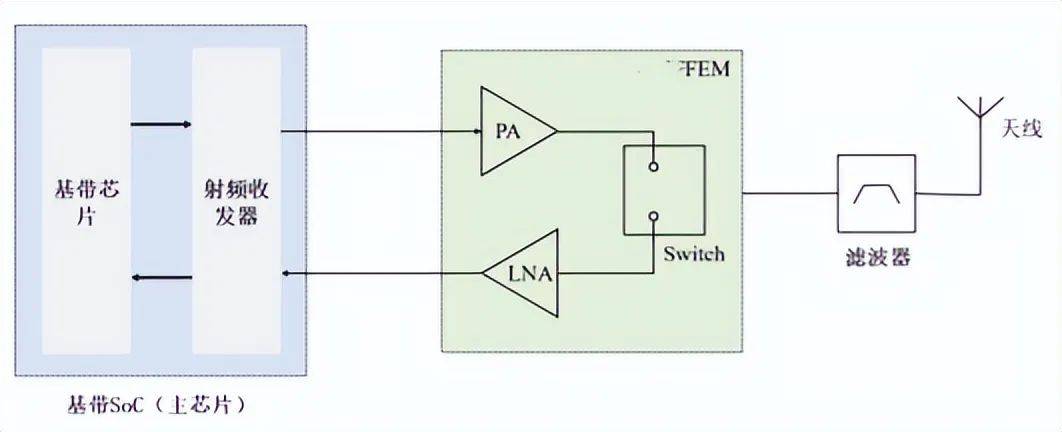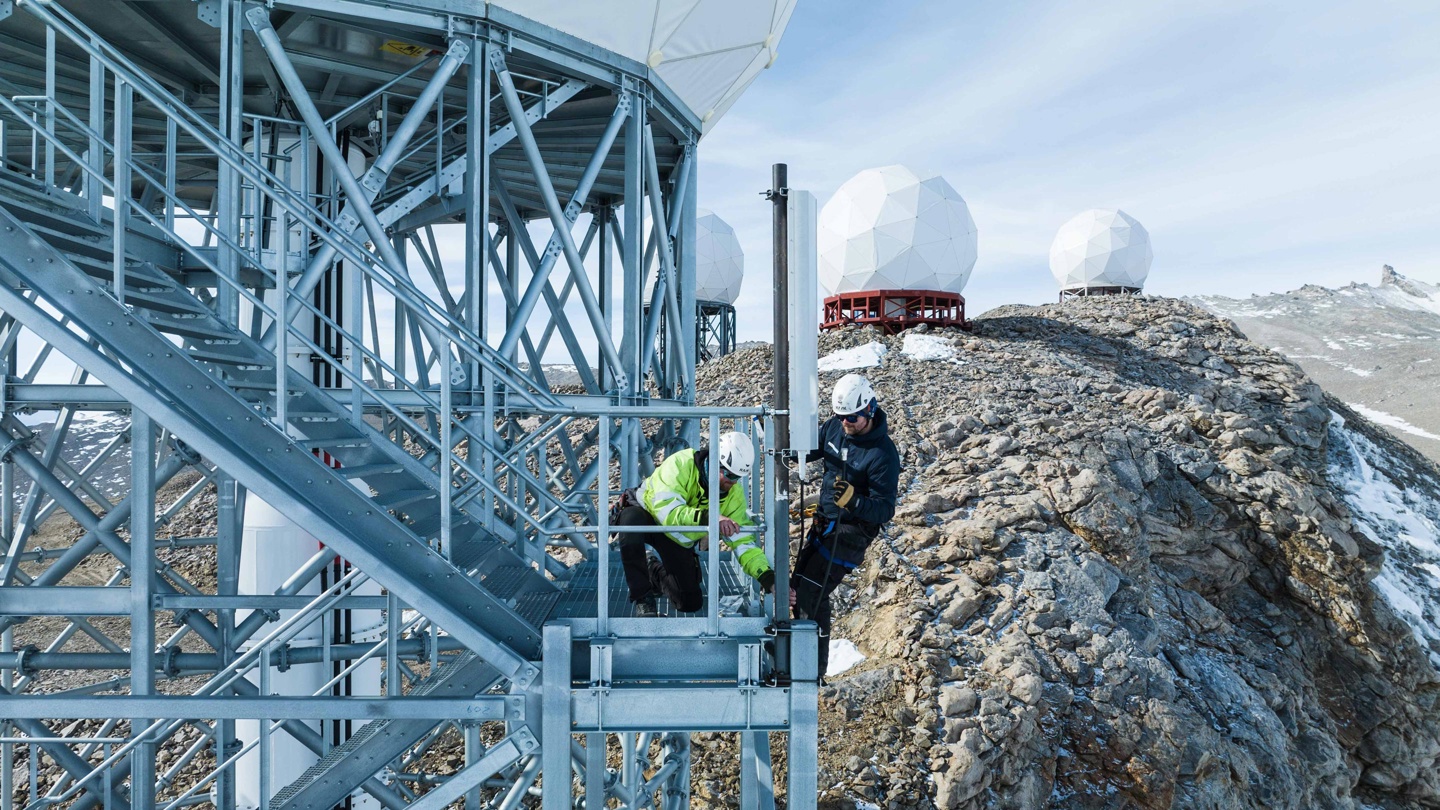 Technology peripherals
Technology peripherals AI
AI The reason why the working distance of UWB base stations continues to increase - IOTE Internet of Things Exhibition
The reason why the working distance of UWB base stations continues to increase - IOTE Internet of Things ExhibitionUWB technology has an interesting trend in the industry application market: the transmission distance of base stations is gradually increasing
A typical scene is a tunnel or mine. The characteristic of this scene is that the space is linear, there are not many obstructions in the middle, and UWB base stations are also laid out in a straight line. The farther the base station's working distance, the fewer base stations required for the project and the lower the project cost
Under market competition, the working distance of UWB base stations on the market is getting farther and farther. The working distance of base stations has expanded from tens of meters in the early days to 100m, 200m, 500m, 1000m, 2000m or even further.
The business logic behind this will not be discussed too much in this article.
Why do UWB base stations work farther and farther away? There are two key components, one is the antenna and the other is the power amplifier (PA)
This article will discuss the UWB-PA market in detail.
What is the role of PA?
The role of PA (power amplifier), as the name suggests, is a component that amplifies the intensity of the transmitted signal when the signal is transmitted. Its purpose is to allow the signal to be transmitted farther.
In communication technology, another concept is the radio frequency front-end chip (FEM). FEM mainly includes:
- Power amplifier (PA): used to increase the intensity of the transmitted signal and improve the signal transmission distance;
- Low noise amplifier (LNA): used to increase the strength of the received signal and improve the sensitivity of the signal;
- RF switch (Switch): controls the transmission and reception of signals;
In addition, there are other devices including filters

The above RF front-end chips can be used independently as discrete devices, or two or more bare chips can be packaged on the same substrate to form a more integrated and efficient RF front-end chip module (FEM). .
What are the scenarios where PA is suitable for UWB?
In UWB products, PA is often added, but not all scenarios are suitable for adding PA
Although PA can make the signal transmit farther, it also brings the problem of making the device consume more power.
Next, we will analyze the four main markets of UWB one by one:
- IoT industry market: In IoT industry applications, most positioning base station deployments require weak current construction. Therefore, this scenario has a basis for power extraction, and the B-side market is a closed environment, and supervision is not so strict. PA Very suitable for use.
- IoT consumer market: Among consumer hardware products, the requirements for power consumption are very high. For example, tag products have high power consumption due to UWB technology, which puts the battery endurance test to a great test. In addition, PA, battery Even more unbearable.
- Mobile phone market: When adding a PA to a mobile phone, on the one hand, the cost and board design difficulty must be considered; on the other hand, the management requirements of radio power consumption must also be considered.
- Automotive market: The factors to be considered when adding PA in the automotive field are basically similar to those in the mobile phone market. Power consumption is not a big issue, but regulatory requirements are an important factor.
In summary, UWB-PA products are very suitable for application scenarios in the IoT industry. In other scenarios, it depends on the situation. The specific decision depends on the form of the product and the conditions of use.
What is the performance of domestic UWB-PA?
To talk about PA products, we have to talk about the frequency band used by UWB.
In the U.S. FCC standards, the frequency band used for UWB is 3.1GHz-10.6GHz. This frequency band standard was also used in China at the beginning. However, in early 2023, the Radio Administration Bureau of the Ministry of Industry and Information Technology issued the "Ultra-Wideband (UWB) Equipment Radio Management Regulations (Draft for Comments)", according to the new version of the "Regulations", the frequency band used by domestic UWB technology in the future is: 7235-8750MHz.
Changes in the frequency band will have an impact on the product
The earliest commercial UWB chip product is DW1000, its operating frequency band is between 3.5Ghz-6GHz, and the corresponding power amplifier products also work in this frequency band
However, with China’s latest frequency band regulations, UWB frequency band requirements are limited to 7235-8750MHz, and PA products in the corresponding frequency band are also required.
According to research, in the domestic market, currently only Chipbaite Microelectronics (Wuxi) Co., Ltd. can provide high-frequency PA products that meet the new national standards. This product is paired with Decawave DW3000 and a number of domestic UWB SOCs. The manufacturer's main control chip has excellent performance and has achieved stable shipments in batches.
It is understood that Xinbaite has released a product for the 7235-8750MHz high-frequency UWB market: CB9328
CB9328 is a PA LNA Switch three-in-one FEM.
CB9328 is a front-end module (FEM). According to reports, it has a fully integrated power amplifier (PA) and low noise amplifier (LNA). CB9328 does not require external matching components, thereby reducing assembly and debugging complexity, reducing BOM cost and PCB area, achieving a low-cost solution
CB9328 has a unique bypass mode, which can bypass the LNA receiving signal when the input signal strength is high. It is also suitable for some occasions that only require a single power amplification. This innovative design significantly expands the application scope of CB9328
At the same time, CB9328 also has the advantages of high power output and low switching loss. Its transmitter can achieve an output power of up to 20dBm@7GHz, and an output gain of up to 23dB@6.5GHz and 21dB@8.5GHz. These excellent performances not only improve the sensitivity of the product and reduce the noise figure, but also enable ultra-wideband products to have stronger output power and longer transmission distance, while also reducing the overall cost of ultra-wideband transceivers and systems
It is reported that in addition to the mass-produced PA CBG9326, LNA CBG9092 and high-frequency FEM CB9328 that work in the UWB low-frequency band, Xinbaite is also developing and iterating the Bypass function that is more in line with national standards and market demand. High-frequency UWB PA/LNA/FEM, a UWB RF front-end product matrix that achieves full coverage of high and low frequency bands, and full coverage of discrete and integrated module products.
The above is the detailed content of The reason why the working distance of UWB base stations continues to increase - IOTE Internet of Things Exhibition. For more information, please follow other related articles on the PHP Chinese website!
 C程序计算3D空间中三个点之间的距离Aug 29, 2023 pm 12:41 PM
C程序计算3D空间中三个点之间的距离Aug 29, 2023 pm 12:41 PM给定一个三维平面,因此有三个坐标,任务是找到给定点之间的距离并显示结果。在三维平面上,有三个坐标轴,x轴的坐标为(x1,y1,z1),y轴的坐标为(x2,y2,z2),z轴的坐标为(x3,y3,z)。计算它们之间的距离有一个直接的公式如下所示$$\sqrt{\lgroupx2-x1\rgroup^{2}+\lgroupy2-y1\rgroup^{2}+\lgroupz2-z1\rgroup^{2}}$$下面是表示三个不同坐标轴及其坐标的图示下面使用的方法如下−输入坐标(x1,
 机器学习基础之数字上的距离:点在空间中的距离Apr 11, 2023 pm 11:40 PM
机器学习基础之数字上的距离:点在空间中的距离Apr 11, 2023 pm 11:40 PM本文转载自微信公众号「活在信息时代」,作者活在信息时代。转载本文请联系活在信息时代公众号。在机器学习中,一个基础的概念就是如何判断两个样本之间的差异,从而能够评价两个样本之间的相似性和类别等信息。而判断这种相似性的度量就是两个样本在特征空间内的距离。根据数据特征的不同,度量方法有很多种。一般而言,对两个数据样本x,y,定义一个函数d(x,y),如果定义其为两个样本之间的距离,那么d(x,y)则需要满足以下几条基本性质:非负性:d(x,y)>=0同一性:d(x,y)=0 ⇔ x=y对
 如何在iOS 17上启用和使用屏幕距离Jun 29, 2023 pm 01:37 PM
如何在iOS 17上启用和使用屏幕距离Jun 29, 2023 pm 01:37 PM在其年度开发者大会上,苹果推出了下一代操作系统来为其设备套件提供支持。像往常一样,iOS17是所有主要变化的核心,具有实时语音邮件、消息转录、实时贴纸、待机模式、全屏实时活动、交互式小部件等功能。在这些新增功能中脱颖而出的功能之一是“屏幕距离”。这是一项以健康为中心的功能,专注于防止iPhone屏幕上的眼睛疲劳和近视。在这篇文章中,我们将解释什么是屏幕距离以及如何在iOS17中启用它。什么是iOS17上的屏幕距离?作为iOS17推出的新健康功能的一部分,Apple提供了屏幕距离功能,以帮助用户预
 iOS 17:如何在iPhone上启用和使用屏幕距离Sep 21, 2023 pm 02:25 PM
iOS 17:如何在iPhone上启用和使用屏幕距离Sep 21, 2023 pm 02:25 PMiOS17更新中的屏幕距离功能是什么?苹果在iPhone上提供了屏幕距离功能,以帮助用户防止眼睛疲劳和近视风险。该功能(在iOS17或更高版本上可用)将利用iPhone的原深感摄像头(也有助于FaceID的摄像头)来测量脸部与手机之间的距离。如果“屏幕距离”检测到您将iPhone握在12英寸或30厘米以下的时间很长,它会提示您与iPhone屏幕保持距离。当您的设备检测到它距离脸部不到12英寸时,您会在屏幕上看到“iPhone太近”消息,并建议您应该保持距离以保护您的视力。只有当您将设备放在更远的
 中国移动与华为联合研发:5G与4G信号同覆盖的700MHz / 900MHz双频双模基站Jan 26, 2024 pm 10:12 PM
中国移动与华为联合研发:5G与4G信号同覆盖的700MHz / 900MHz双频双模基站Jan 26, 2024 pm 10:12 PM1月26日消息,近日,中国移动研究院联合华为公司在云南省腾冲、楚雄、临沧等六地市完成700MHz/900MHz双频双模基站外场测试,验证了该产品的超远覆盖能力和数百兆业务速率。据介绍,该基站支持5G与4G共站址、同建设、同覆盖,可促进网络建设成本降低,推动5G和4G信号覆盖,助力国家“信号升格”专项行动快速落地。据此前报道,工信部等国家部委本月初发布《关于开展“信号升格”专项行动的通知》,提出乡镇农村场景“移动网络(4G和5G)信号显著提升”的新目标。中国移动针对边远农村地区建站难度大、周期长、
 UWB基站的工作距离不断增加的原因- IOTE物联网展Nov 27, 2023 pm 01:21 PM
UWB基站的工作距离不断增加的原因- IOTE物联网展Nov 27, 2023 pm 01:21 PMUWB技术在行业应用市场中出现了一个有趣的趋势:基站的传输距离正在逐渐增加一个典型的场景是隧道或矿井,这种场景的特点是空间是线性的,中间没有太多的遮挡物,UWB基站也是直线布设。基站的工作距离越远,项目所需的基站数量就越少,项目成本也就越低在市场竞争下,市场上的UWB基站工作距离就越来越远,基站的工作距离从早期的几十米,扩大到100m、200m、500m、1000m、2000m甚至更远。这背后的商业逻辑本文就不做过多的探讨。为什么UWB基站的工作距离越来越远?其中有两个关键的组件,一个是天线,另
 俄罗斯计划 2025 年生产 1000 个国产 5G 基站,向百万人口大城市铺设 5G 网络Feb 06, 2024 pm 12:27 PM
俄罗斯计划 2025 年生产 1000 个国产 5G 基站,向百万人口大城市铺设 5G 网络Feb 06, 2024 pm 12:27 PM2月6日消息,综合俄新社、俄罗斯卫星通讯社当地时间5日报道,俄罗斯副总理切尔内申科2月5日表示,俄罗斯计划2025年生产1000个国产5G基站,从而加快百万人口城市5G网络的部署进程。图源Pexels据其介绍,使用俄罗斯国产基站在当地大城市展开5G网络的部署工作,预计从2026年开始。这一发展工作是在“现代和未来移动通信网络”方向的路线图框架内进行的,该框架提出了2030年之前需要实现的一系列目标。去年8月,俄罗斯发布了通信发展战略草案。草案指出,到2035年,所有人口在10万以上的城市都将使用
 挪威电信公司 Telenor 在南极建成“世界最南端的移动电话基站”Feb 15, 2024 pm 12:00 PM
挪威电信公司 Telenor 在南极建成“世界最南端的移动电话基站”Feb 15, 2024 pm 12:00 PM2月8日消息,挪威电信公司Telenor宣布,该公司已在南极洲开设了世界最南端的移动电话基站,这标志着在数据收集和研究人员安全方面的突破。据官方介绍,该基站位于南纬72度,在“巨魔”研究站附近,于今年2月投入运营,可为挪威极地研究所位于南极洲的Troll研究站提供覆盖。值得一提的是,这家挪威电信公司前段时间刚刚还启用了世界最北端的移动电话基站——位于北纬79度、挪威斯瓦尔巴群岛(Svalbard)的新奥勒松基站。挪威电信斯瓦尔巴群岛分公司的负责人克里斯蒂安・斯科通告诉法新社记者,在研究站附近搭建


Hot AI Tools

Undresser.AI Undress
AI-powered app for creating realistic nude photos

AI Clothes Remover
Online AI tool for removing clothes from photos.

Undress AI Tool
Undress images for free

Clothoff.io
AI clothes remover

AI Hentai Generator
Generate AI Hentai for free.

Hot Article

Hot Tools

Zend Studio 13.0.1
Powerful PHP integrated development environment

Notepad++7.3.1
Easy-to-use and free code editor

SecLists
SecLists is the ultimate security tester's companion. It is a collection of various types of lists that are frequently used during security assessments, all in one place. SecLists helps make security testing more efficient and productive by conveniently providing all the lists a security tester might need. List types include usernames, passwords, URLs, fuzzing payloads, sensitive data patterns, web shells, and more. The tester can simply pull this repository onto a new test machine and he will have access to every type of list he needs.

ZendStudio 13.5.1 Mac
Powerful PHP integrated development environment

EditPlus Chinese cracked version
Small size, syntax highlighting, does not support code prompt function





